ID-DOC: general search
Here you can enter a general keyword and perform a general search.
??? What are these question marks doing here? These represent tools which we know by a Dutch or French name, but who's English name is yet unknown. Suggestions are always welcome!
If you cannot find a certain tool, or if you experience other problems with this page, please let us know at info@mot.be.
Search for: tool
Showing search results 201 - 250
1,488 results found
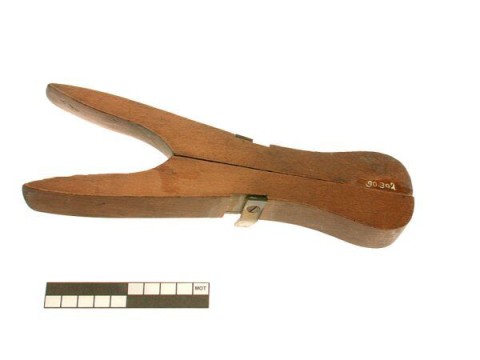
Boot jack
The boot jack is a wooden or metal (now also plastic) tool for easy removal of boots. Usually it consists of a fork-shaped branch or plank (approx. 25-30 cm by 10 cm). Underneath there is a cross wood or a metal support so that the fork or the notch is about 5 cm above the ground. The whole can also be made of metal. The back of the one boot is inserted into the fork-shaped end and the other foot is placed on the board. Another model consists of a plank into which an opening in the shape of a foot has been cut (1). There is also a foldable model where the shelf is hinged in the middle so that it can be taken with you on a journey more easily. The boot jack can be combined with a brush or a boot hook. [MOT] (1) ARMINJON & BLONDEL: 336 write that this model can be provided with a hinged long handle that can be grasped as a support.
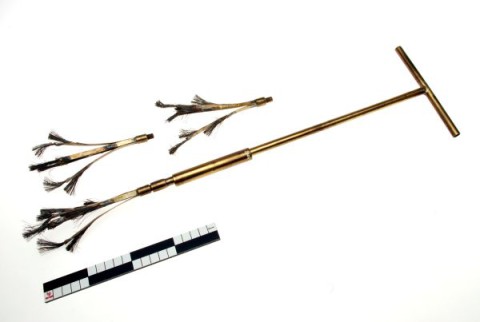
Bottle-brush
This text about the bottle-brush can only be consulted in Dutch.
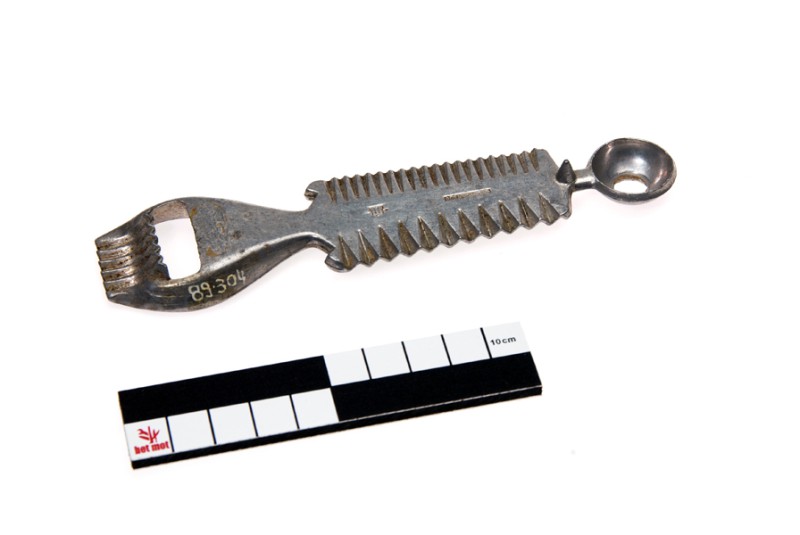
Bottleopener
This text can only be consulted in Dutch
<https://www.mot.be/resource/Tool/bottleopener?lang=nl>
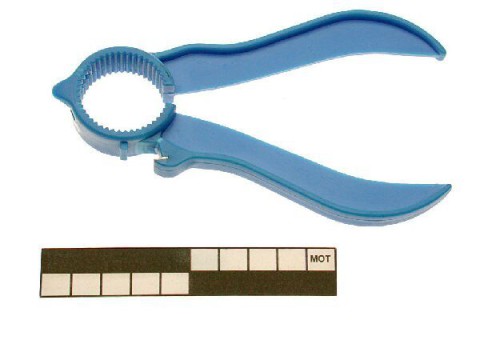
Bottleopener for screw caps
This text can only be consulted in Dutch
<https://www.mot.be/resource/Tool/227?lang=nl>
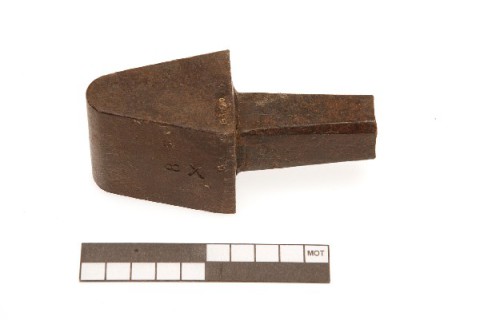
Bottom fuller
This text can only be consulted in Dutch
<https://www.mot.be/resource/Tool/bottom-fuller?lang=nl>
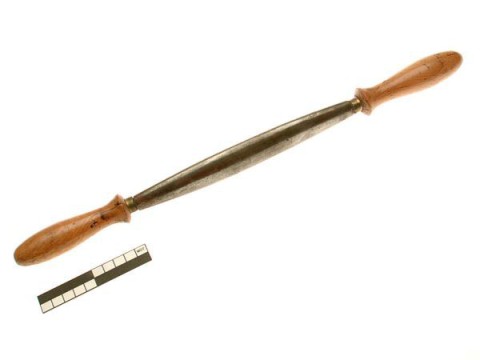
Bottom glazer
This text can only be consulted in Dutch
<https://www.mot.be/resource/Tool/bottom-glazer?lang=nl>
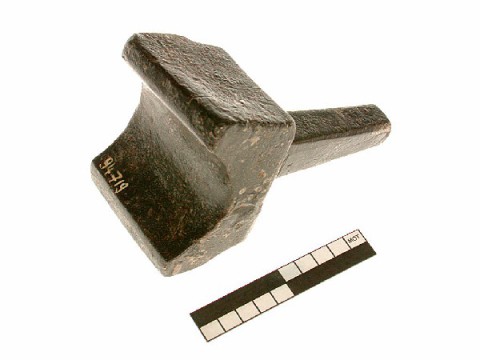
Bottom swage
This text can only be consulted in Dutch
<https://www.mot.be/resource/Tool/bottom-swage?lang=nl>
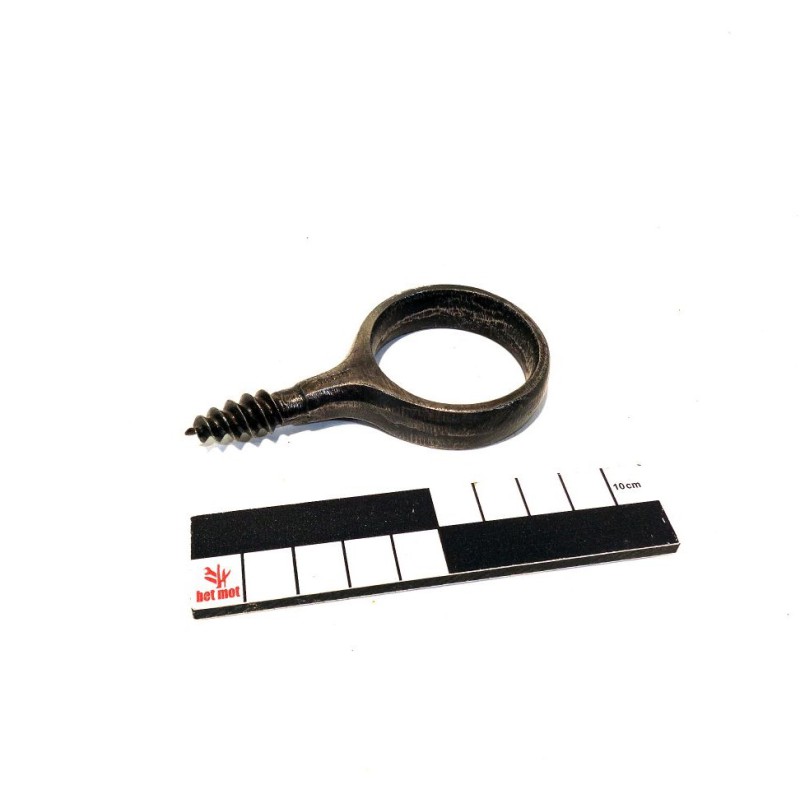
Bottom-puller
This text can only be consulted in Dutch
<https://www.mot.be/resource/Tool/bottom-puller?lang=nl>
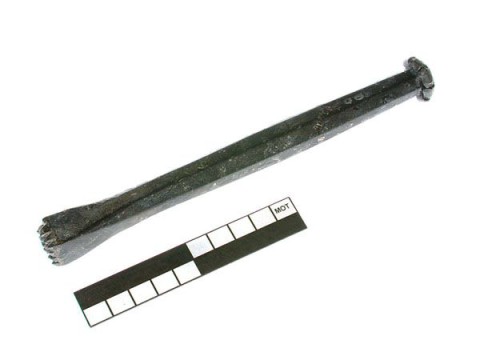
Bouchard (chisel)
Chisel with one or more rows of pyramid-shaped pointed teeth, similar to
the head of a bush hammer, for flattening natural stone. The stonecutter
uses this chisel together with a metal carver's mallet to smooth uneven
surfaces of natural stone, and can therefore work much more accurately than
with a bush hammer. [MOT]
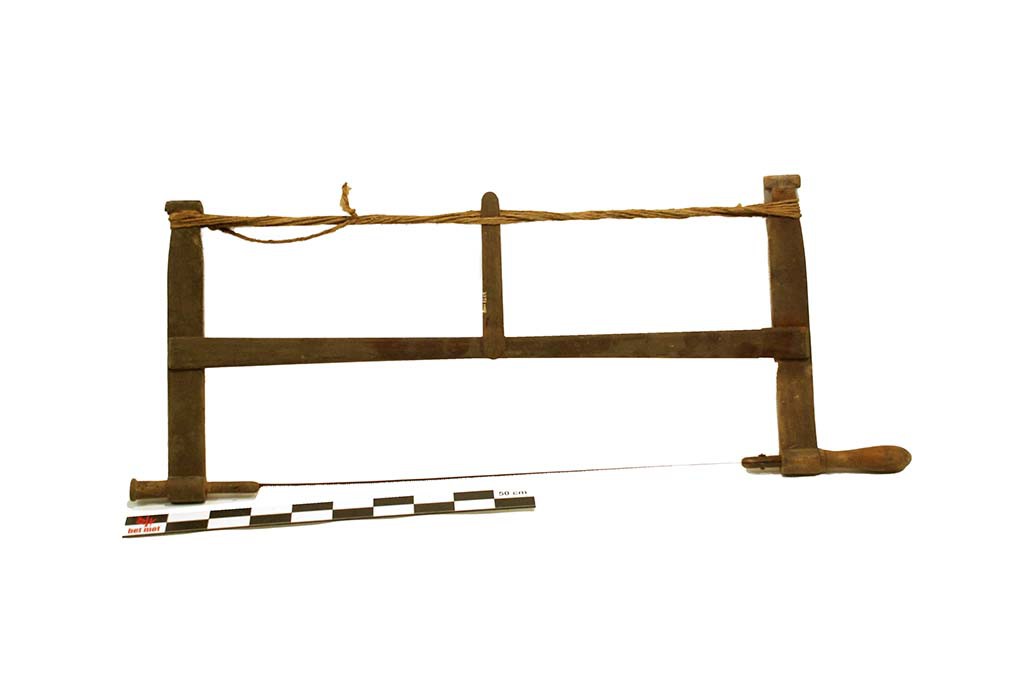
Bow saw
The rotary saw is a span saw of approx. 60 cm, very similar to the rip saw
but with a narrow blade (1 cm) and relatively wide set teeth so that it can
easily follow curved lines. Thanks to the knobs that stop it at both ends,
the blade in its frame can be turned in all directions. It can also be
detached for insertion through a hole drilled in a shelf. This saw is
handled vertically. See also the ordinary span saw. [MOT]
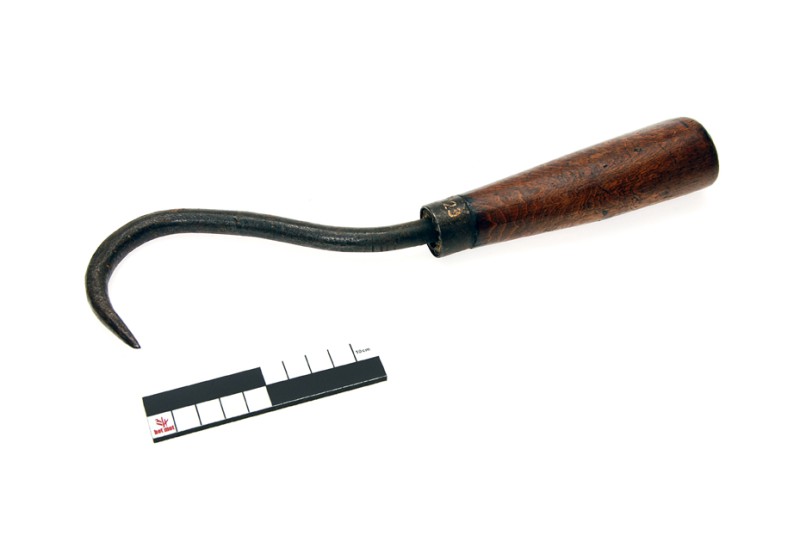
Box hook
Metal S-shaped hook (approx. 30 cm) with straight or T-handle, used by the
porter in ports to "move strong boxes or crates and other goods when the
packaging and contents are not damaged" (1). It can be distinguished from
the cotton hook and the wood hook. [MOT] (1) JANSE: 27.
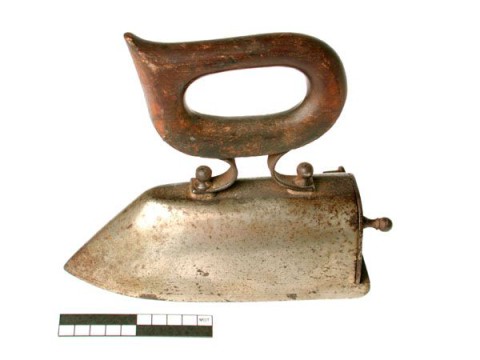
Box iron
This text can only be consulted in Dutch
<https://www.mot.be/resource/Tool/box-iron?lang=nl>
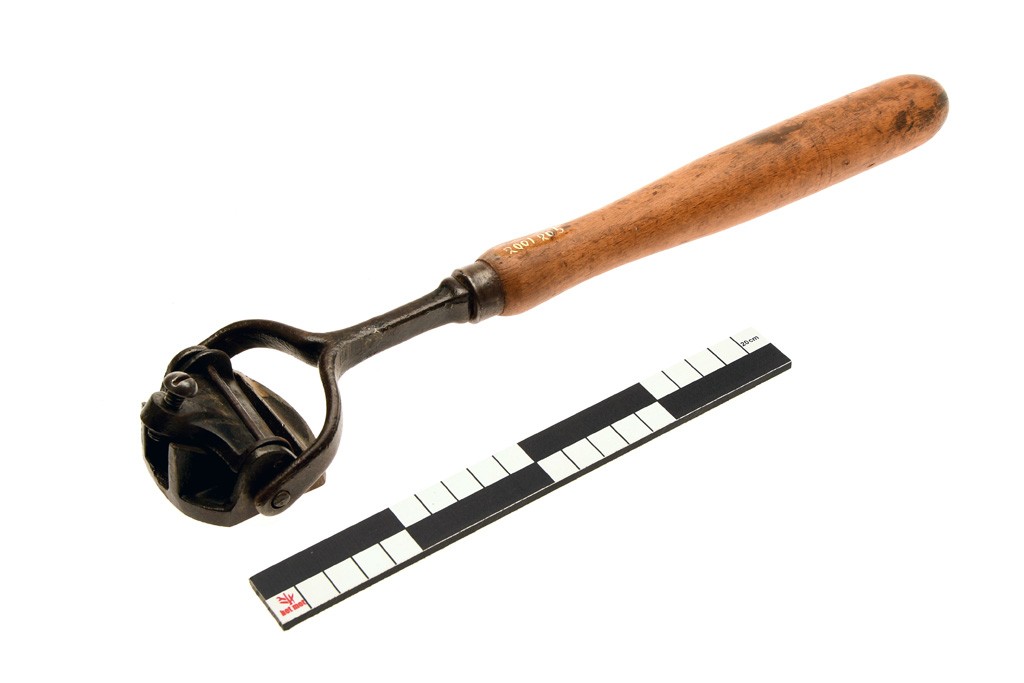
Box scraper
This text can only be consulted in Dutch
<https://www.mot.be/resource/Tool/box-scraper?lang=nl>
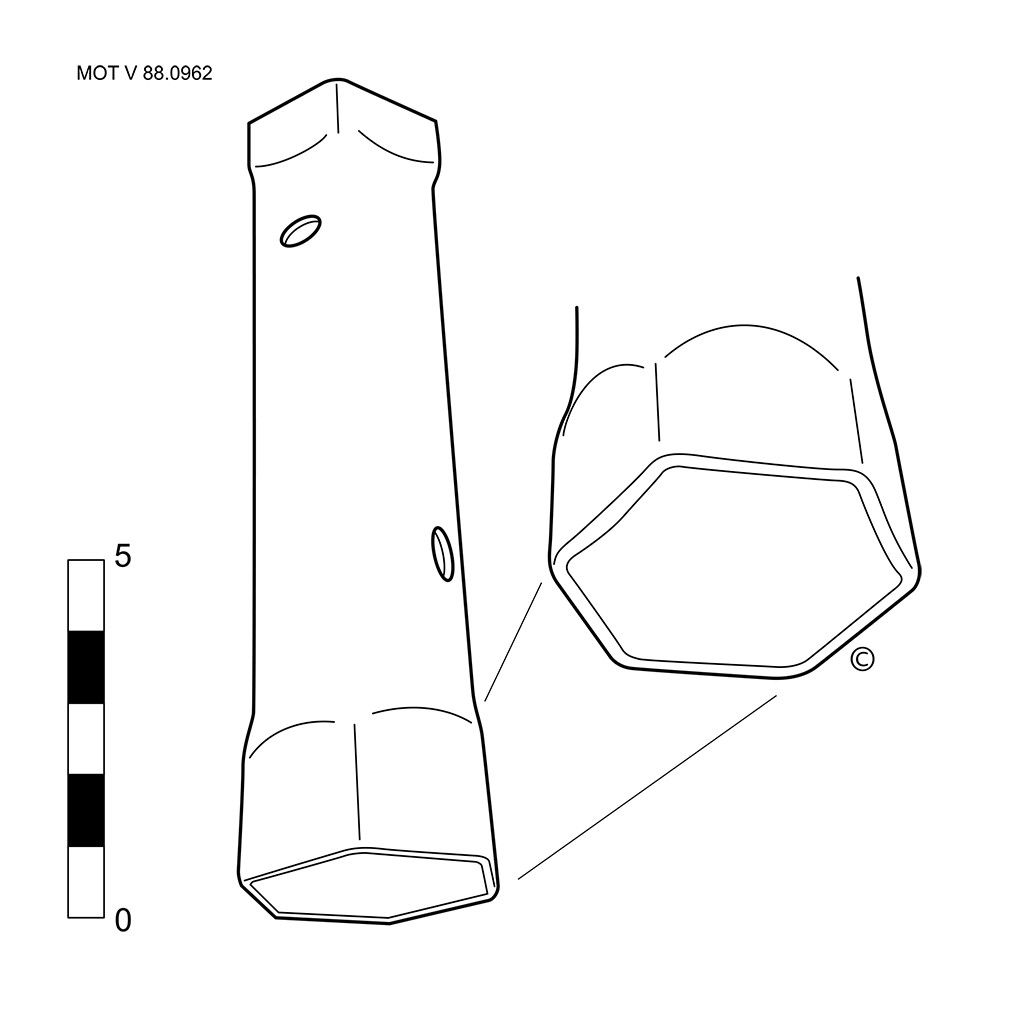
Box spanner
This text can only be consulted in Dutch
<https://www.mot.be/resource/Tool/box-spanner?lang=nl>
Brace
This text can only be consulted in Dutch. See also the corner brace. [MOT]
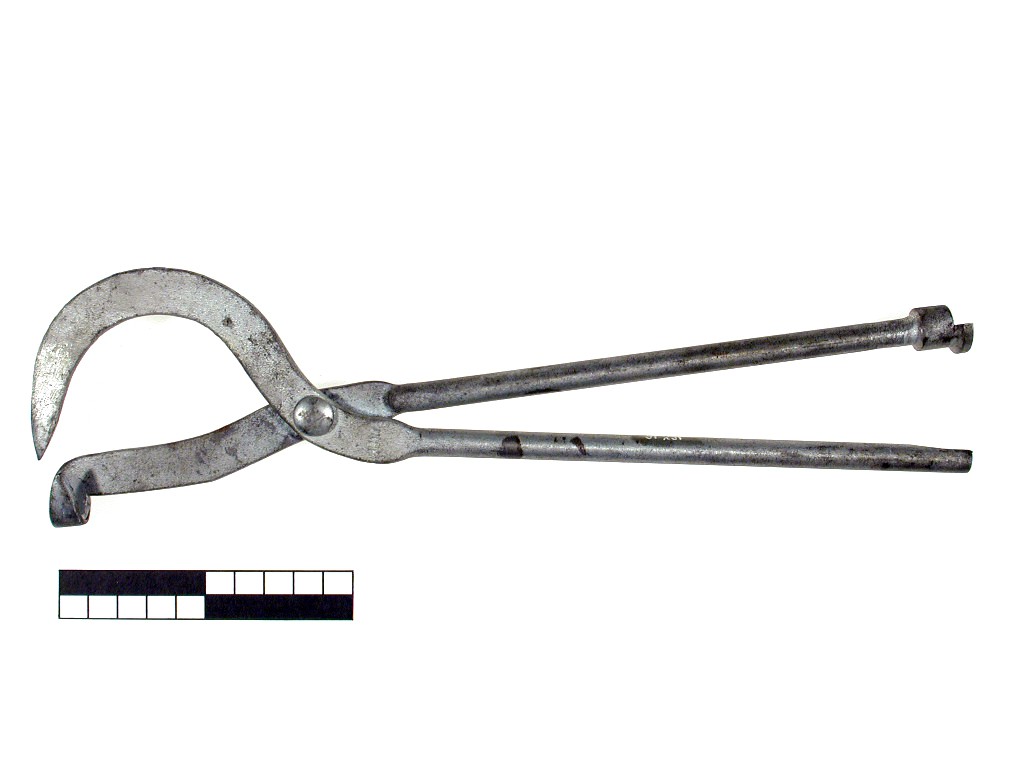
Brake spring pliers
This text can only be consulted in Dutch
<https://www.mot.be/resource/Tool/brake-spring-pliers?lang=nl>
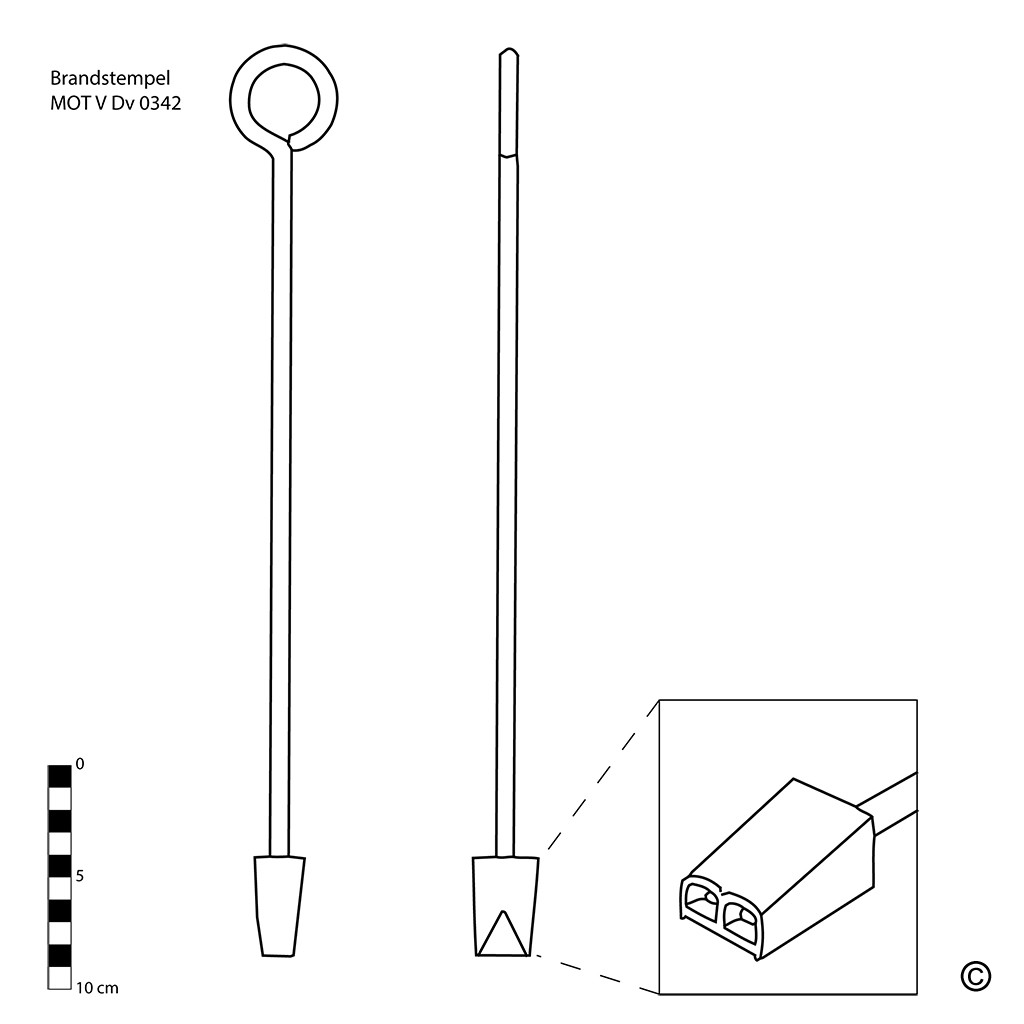
Branding iron
This text can only be consulted in Dutch
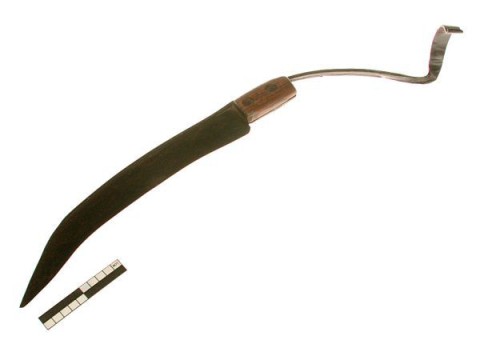
Bread knife
Knife with a fairly rigid, straight and long (approx. 20-30 cm) blade, so
that even large breads can be cut. You can also cut a cake horizontally
with it to spread a layer of whipped cream, pudding, etc. The bread was
often cut on the breast, so with the cut towards you. That's why bread
knives were made with a hook-shaped handle so that the hand would not slip.
In order to be able to exert a greater force with less effort, knives were
also made with a support for the forearm (1) or with loose supports through
which the blade protruded. There is also a more or less sickle-shaped bread
knife with a smooth edge that was also used on the chest. The cut can be
smooth, wavy (2) or serrated (see also frozen-food knife knife and snow
saw). With teeth it is easier to get through the crust. There are also
bread knives that have a cut on both sides, eg one wavy and one with teeth.
To facilitate regular cutting, guides were made that could be attached to
the blade of any knife and knives with built-in...
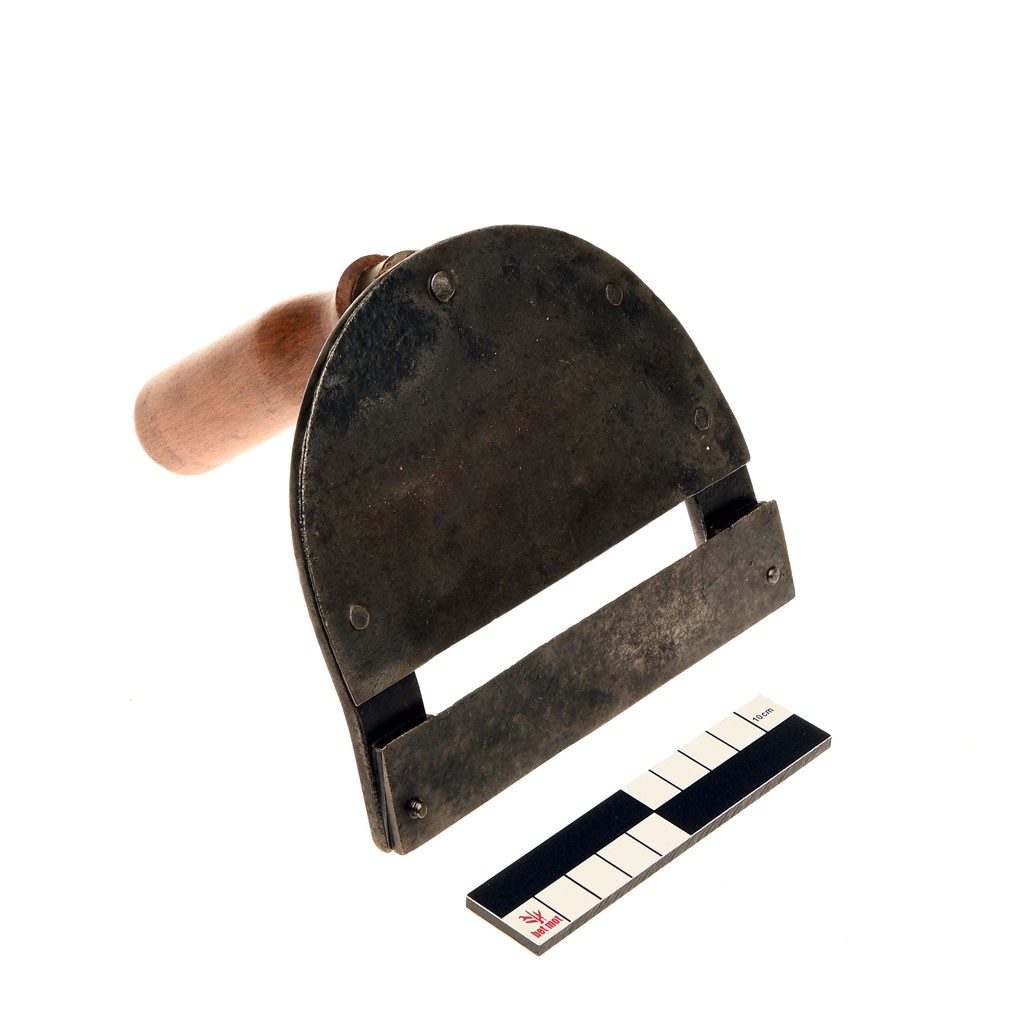
Bread plane
The bread plane (1) is used to shave and crumble small pieces of hardened
bread. Originally, this was done to thicken cooking liquid or broth with
crumbled bread, the soupe (2). The tool was mainly spread in France in the
nineteenth century in places where fresh bread could not be baked often or
not all year round. See also the bread slicer. [MOT] (1) Proper name
unknown. Derived from French 'rabot à pain'.
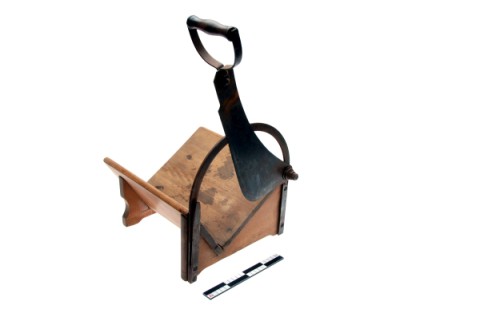
Bread slicer
This text can only be consulted in Dutch
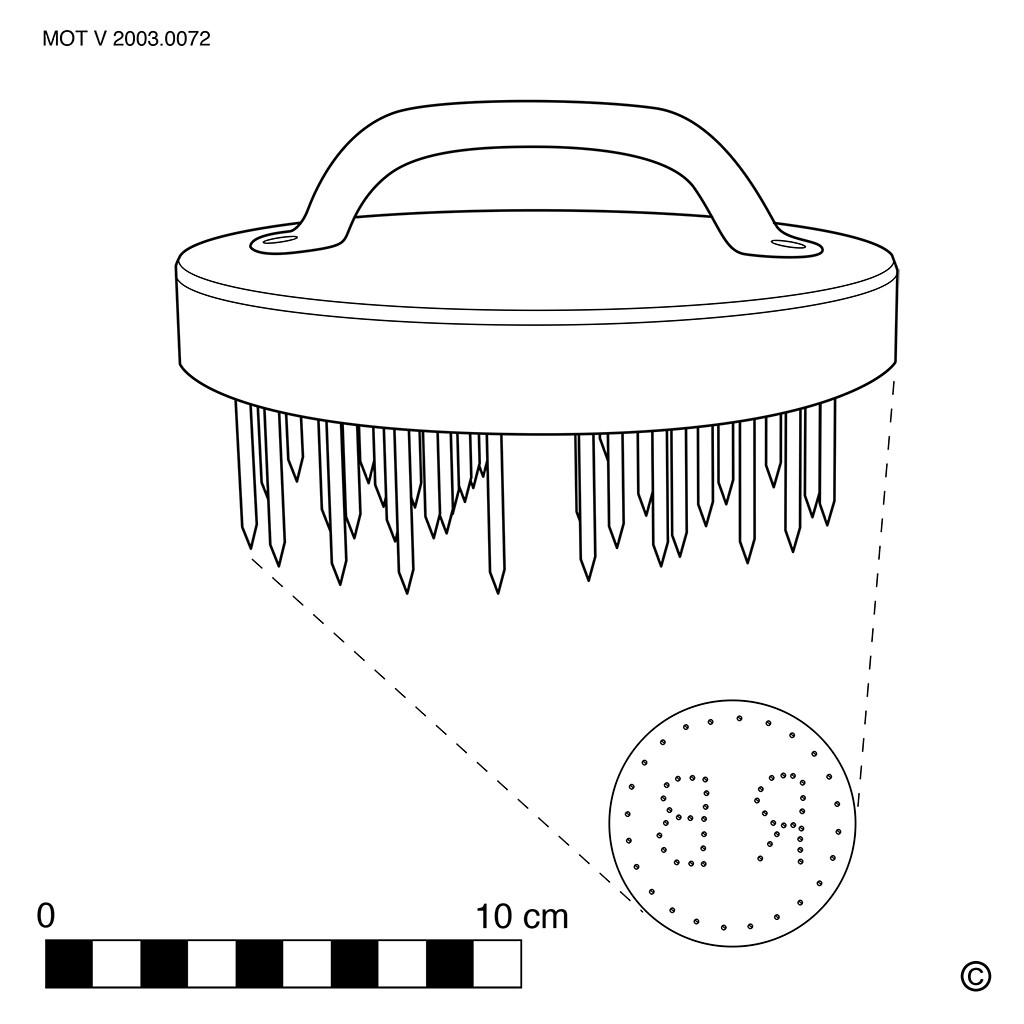
Bread stamp
This text can only be consulted in Dutch
<https://www.mot.be/resource/Tool/bread-stamp?lang=nl>
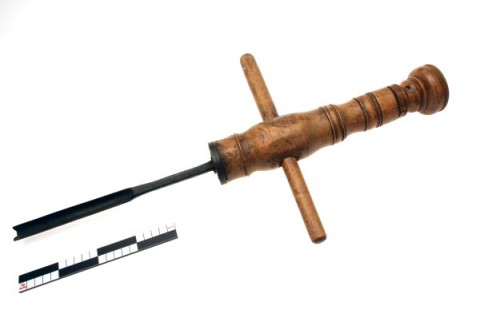
Breast auger
This text can only be consulted in Dutch
<https://www.mot.be/resource/Tool/breast-auger?lang=nl>
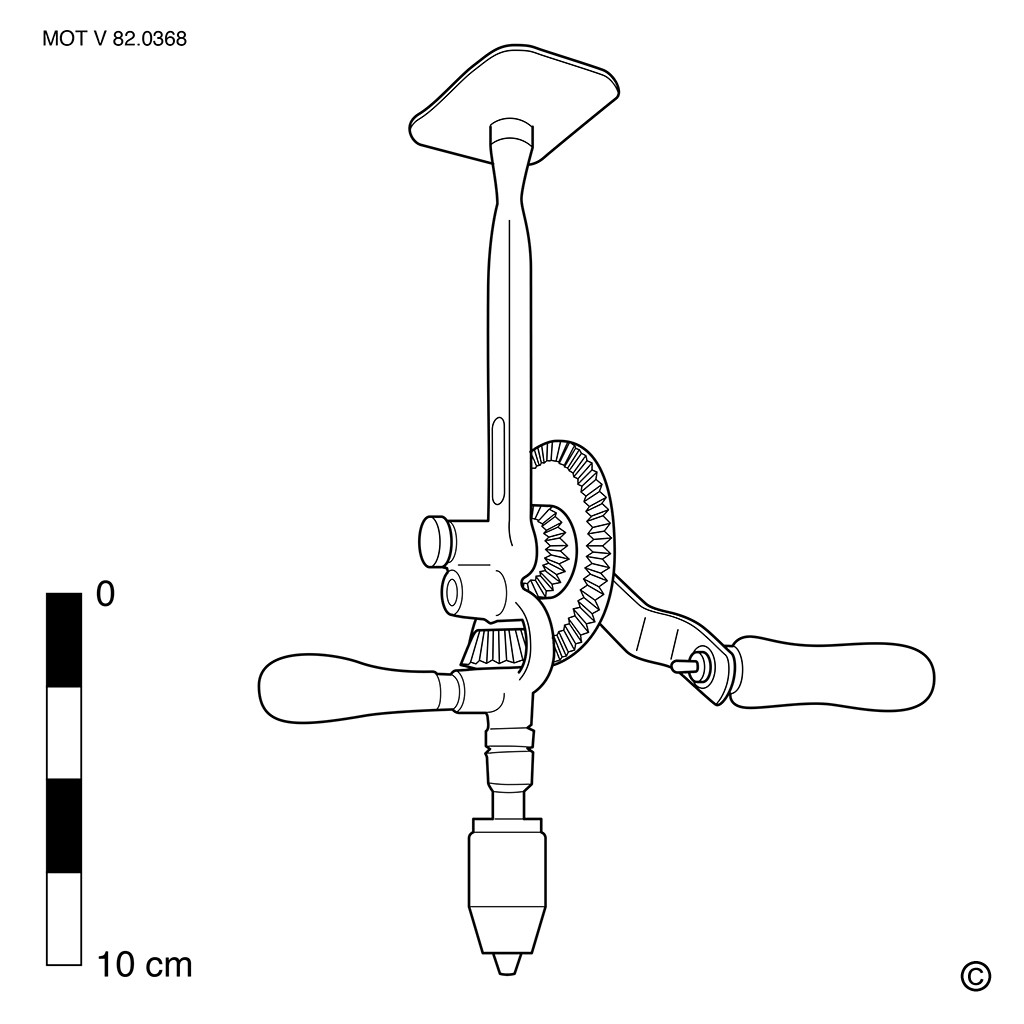
Breast drill
This text can only be consulted in Dutch
<https://www.mot.be/resource/Tool/breast-drill?lang=nl>
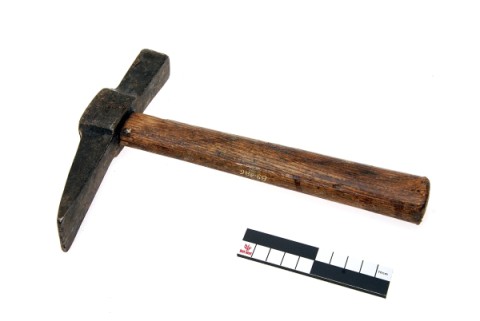
Brick hammer
This text can only be consulted in Dutch
<https://www.mot.be/resource/Tool/brick-hammer?lang=nl>
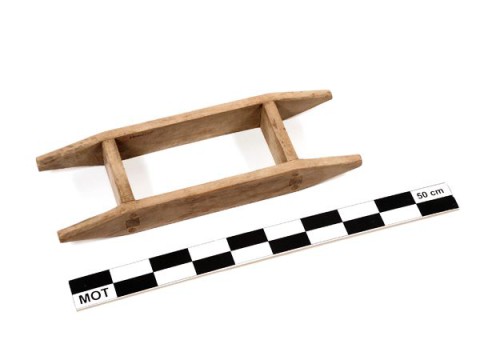
Brick mould
This text can only be consulted in Dutch
<https://www.mot.be/resource/Tool/brick-mould?lang=nl>
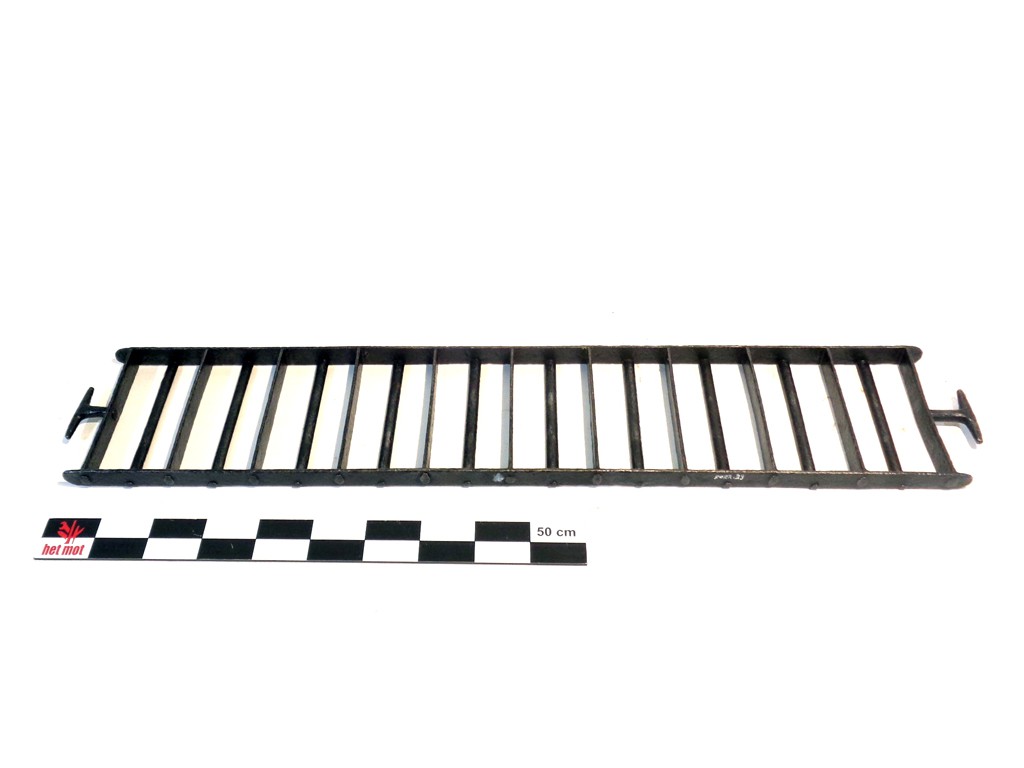
Briquette mould
This text can only be consulted in Dutch. This mould for charcoal
briquettes is to be distinguished from some metal models of the brick
mould. See also the briquette press. [MOT]
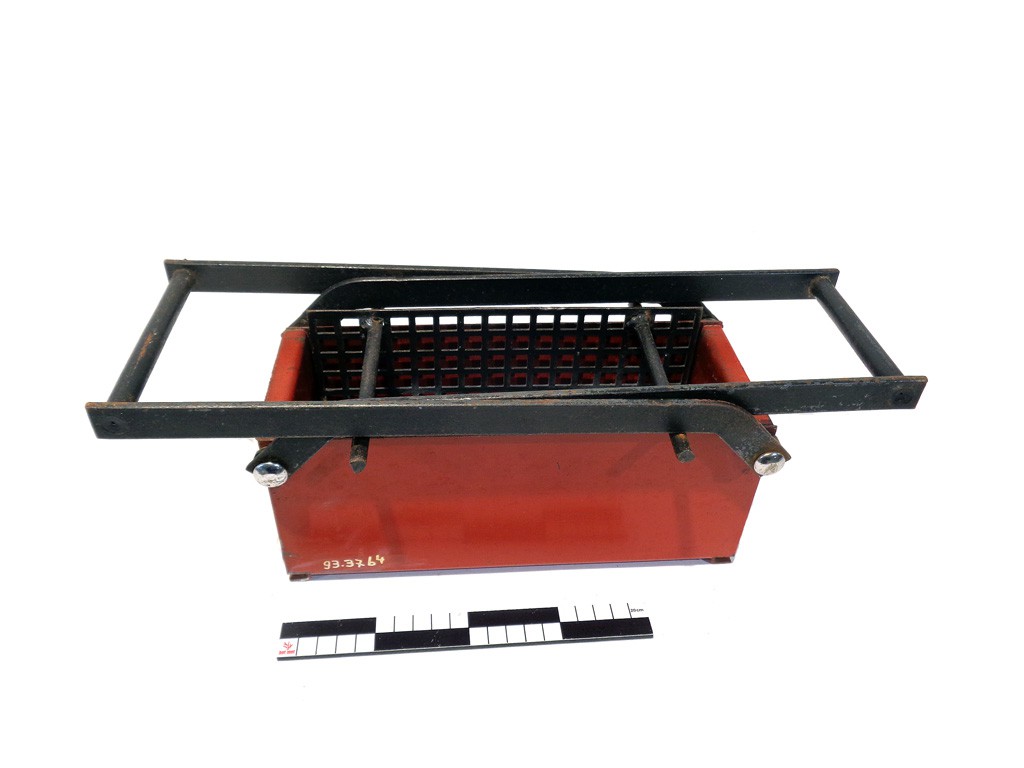
Briquette press
The briquette press is a pair of tongs to compress paper pulp into
rectangular briquettes, which serve as fuel for the fire. Domestic models
consist of a rectangular iron container, which is filled with cut paper and
cardboard, which has been soaked in water. A matching iron grid is placed
on it and pressed firmly by pressing a lever of two side brackets together.
Once the briquette has been formed, it can be pushed out by hand from the
bottom. According to the same principle, there are also presses to compress
sawdust and wood chips, for example. [MOT]
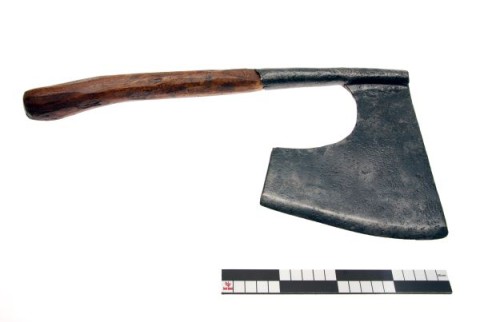
Broad axe
The broad axe is used for squaring logs and heavy pieces of wood by hewing.
It is also sometimes used to peel a tree. This axe weighs approximately
1.5-3.5 kg and is characterized by a wide blade (up to 40 cm) with one
bevel. The stem is 25-40 cm long and is held with one or both hands. The
trunk is first smeared (see chalk line) to indicate the shape to be
obtained. If little wood has to be removed, the carpenter immediately
proceeds to work with the broad axe; he stands next to the trunk and thus
cuts in the direction of the fibers. If the sapwood is too thick, he chops
notches in it with the felling axe (1) to about 0.5-1 cm from the line; the
distance between the notches (90-180 cm) (2) depends on the type of wood
and also on the piece (straight fibers or not). The wood between the
notches is then cut away with the felling axe. The rough surface is cut
evenly against the line with the broad axe. The broad axe is the iconic
tool of the (ship) carpenter. The tool can be distinguished...
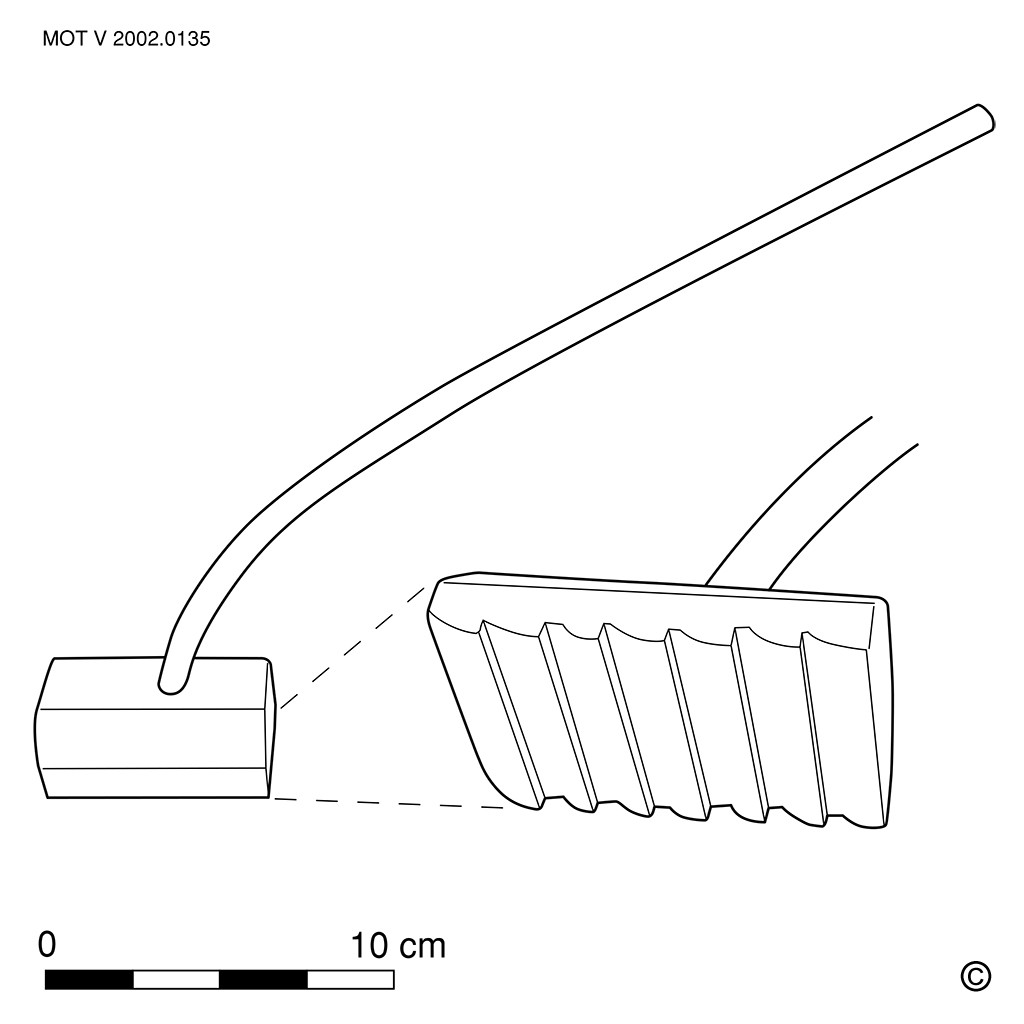
Bruising mail
This text can only be consulted in Dutch
<https://www.mot.be/resource/Tool/bruising-mail?lang=nl>
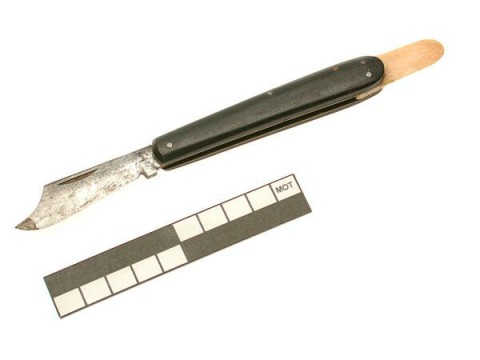
Budding knife
This text can only be consulted in Dutch
<https://www.mot.be/resource/Tool/budding-knife?lang=nl>
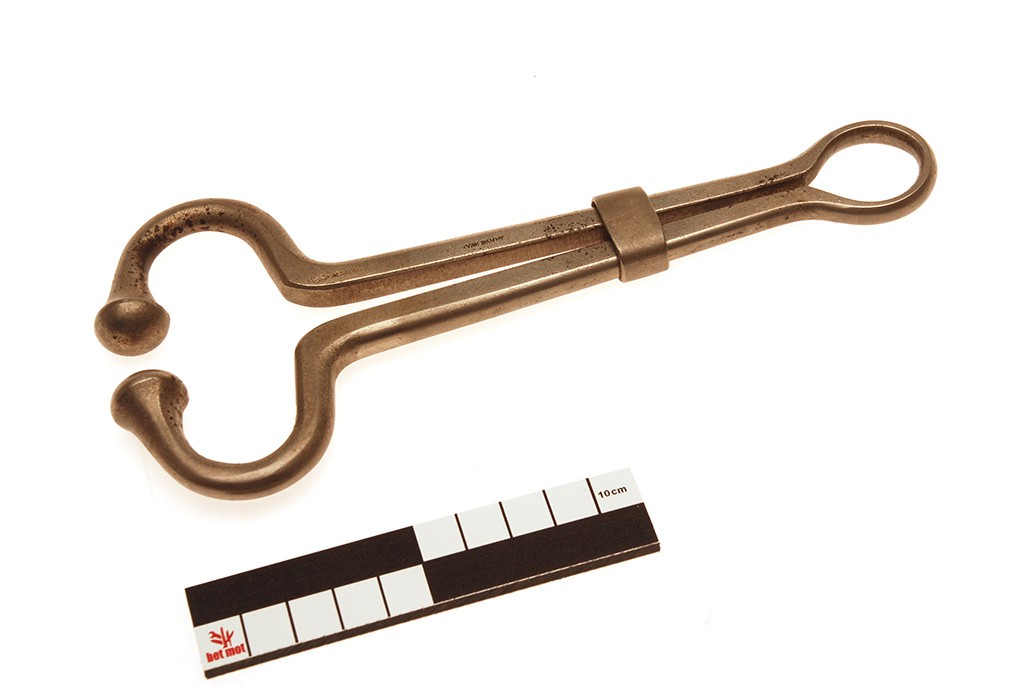
Bull holder
When a bull is not ringed, the farmer can keep it under control with the
help of a bull holder. He places the pliers on the septum in the nose and
closes the arms. The bull must hold its head still so as not to be in pain.
The jaws of a nose clipper are wide and round. They end in two spheres so
as not to hurt the septum. The pincers can consist of two levers of the
first type (e.g. MOT V 91.0677) with the arms usually ending in an eye, so
that the farmer can attach a rope or a bull leader. The bull holder can
also consist of two levers of the third kind whereby a ring slides over the
arms to close the jaws (e.g. MOT V 83.0399). Sometimes that ring is
combined with a leaf spring (e.g. MOT V Dv 0011) or replaced by a coil
spring (e.g. MOT V 96.0283). In a specific model, the distance between the
jaws of the pliers is controlled by an adjusting screw (e.g. MOT V
91.0679). See also the bull leader. [MOT]
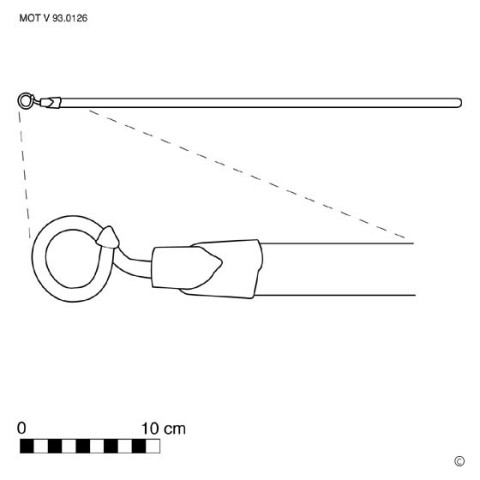
Bull leader
This text can only be consulted in Dutch
<https://www.mot.be/resource/Tool/bull-leader?lang=nl>
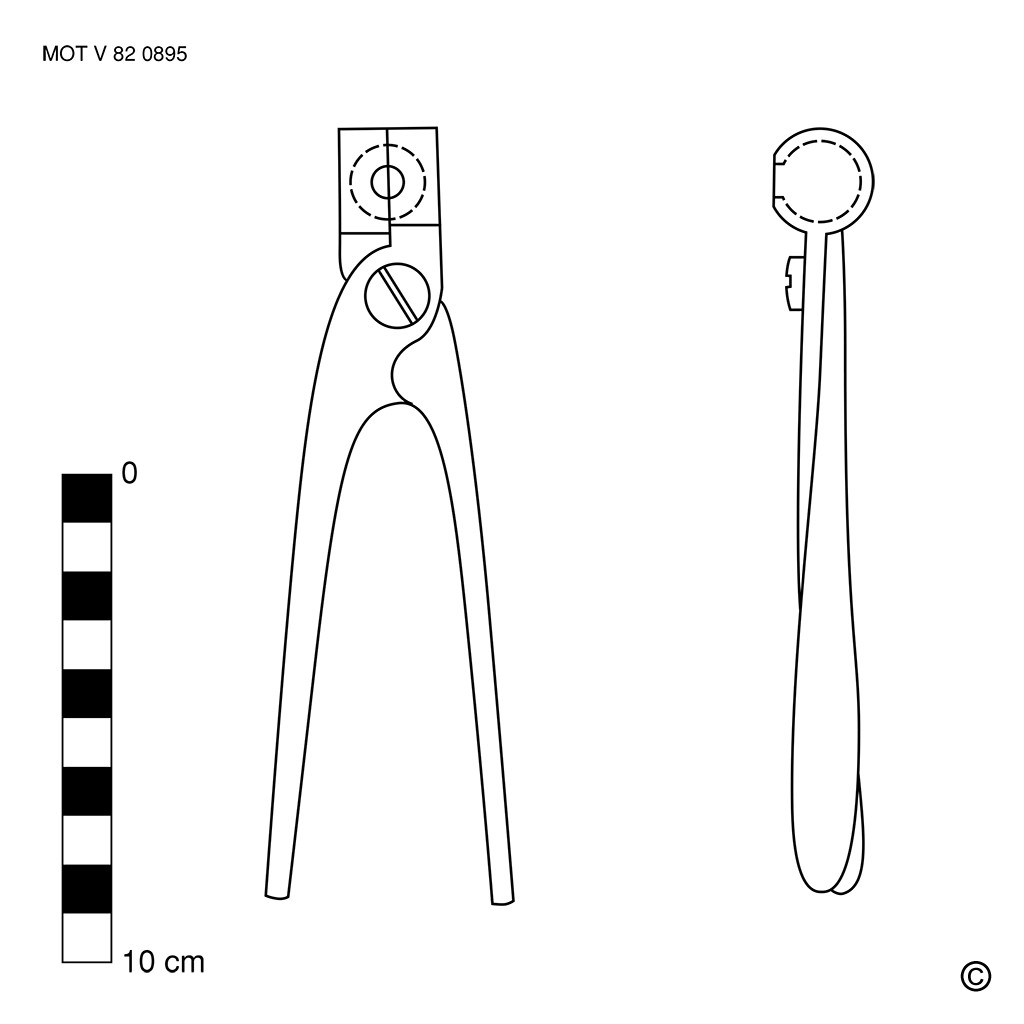
Bullet-mould
This text can only be consulted in Dutch
<https://www.mot.be/resource/Tool/bullet-mould?lang=nl>
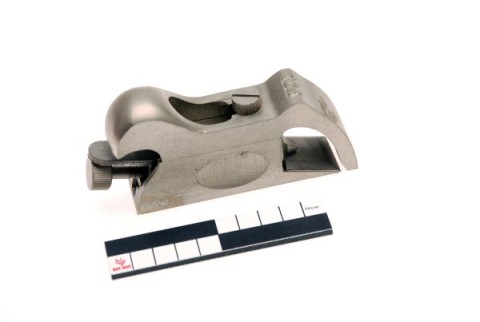
Bullnose plane
This text can only be consulted in Dutch
<https://www.mot.be/resource/Tool/bullnose-plane?lang=nl>
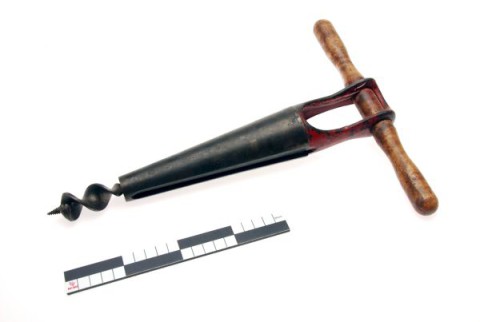
Bung borer
This text can only be consulted in Dutch
<https://www.mot.be/resource/Tool/bung-borer?lang=nl>
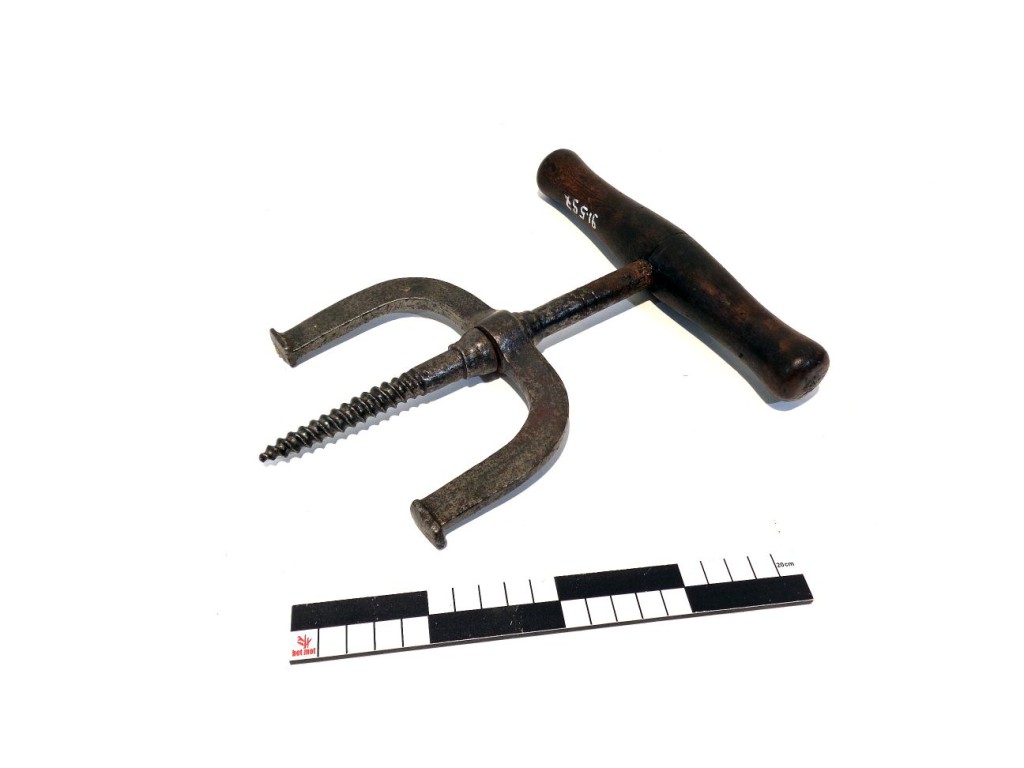
Bung drawer
This text can only be consulted in Dutch
<https://www.mot.be/resource/Tool/bung-drawer?lang=nl>
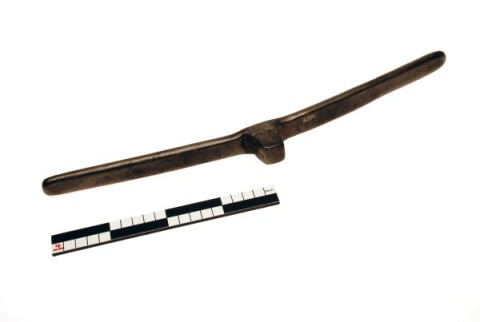
Bung key
This text can only be consulted in Dutch
<https://www.mot.be/resource/Tool/bung-key?lang=nl>
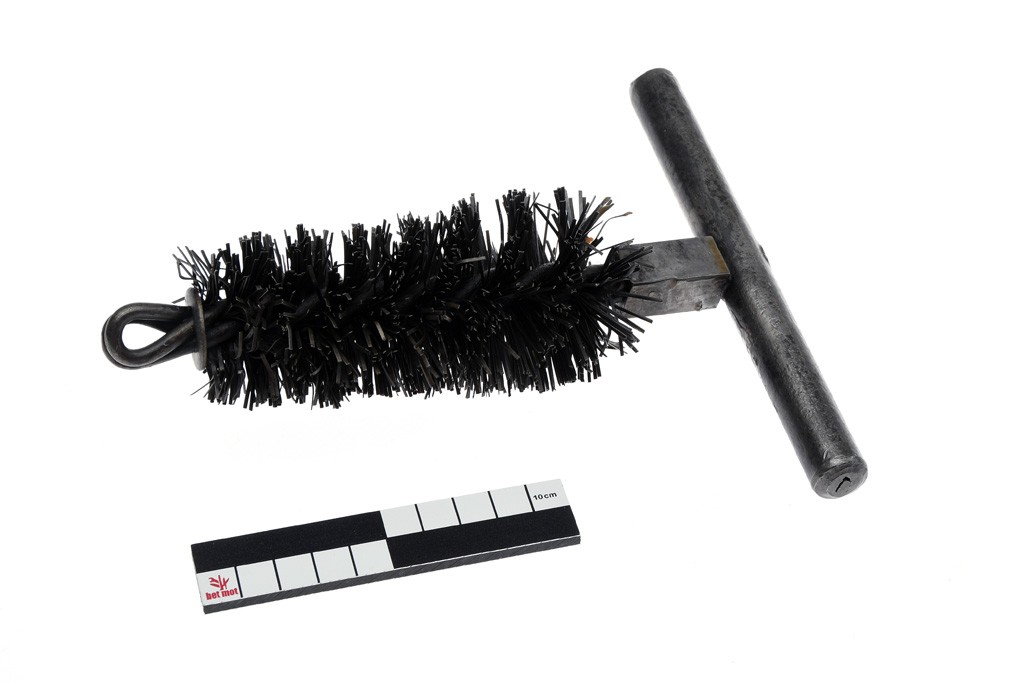
Bunghole brush
This text can only be consulted in Dutch
<https://www.mot.be/resource/Tool/bunghole-brush?lang=nl>
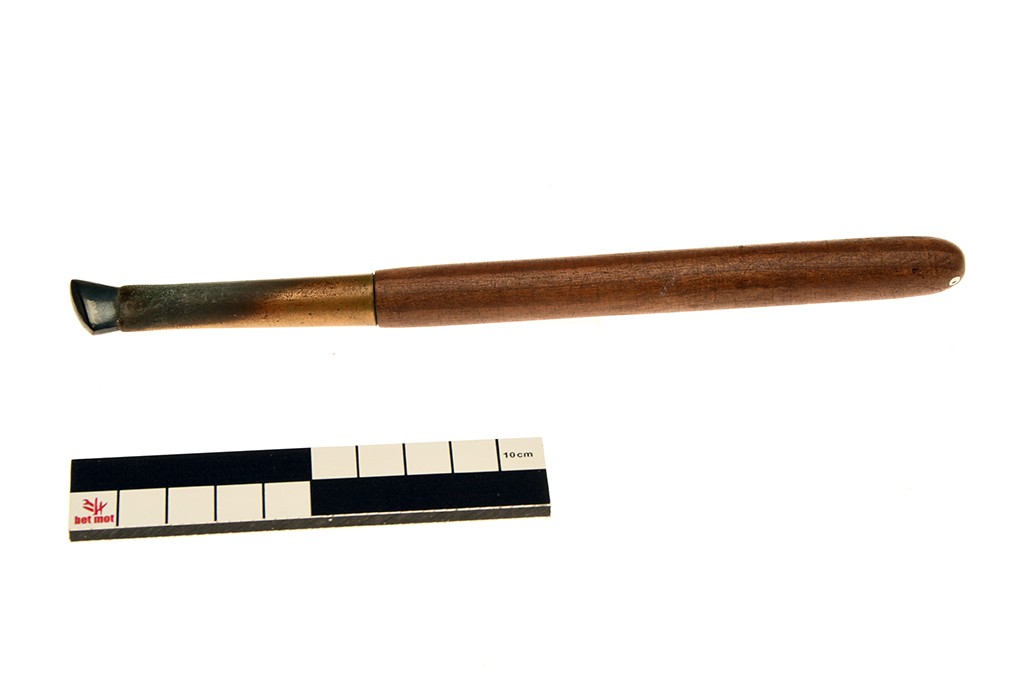
Burnisher
This text can only be consulted in Dutch
<https://www.mot.be/resource/Tool/burnisher?lang=nl>
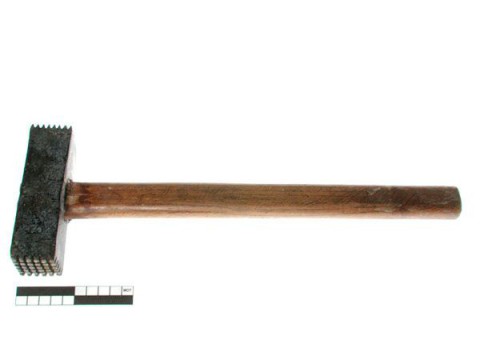
Bush hammer
Hammer with an elongated hammer head (approx. 10-20 cm long, approx. 2-5 cm
wide) made of hardened steel with pyramid-shaped pointed teeth on both
faces and a wooden handle (approx. 30-40 cm), for flattening natural stone.
This type of stone finishing is called bushing. From the 17th century
onwards, the bush hammer was used for hard stone types, never for soft
stone or marble. Because the tips wear out quickly, there are models with
interchangeable heads. The disadvantage of this tool is that it sometimes
causes cracks that make the stone weather faster. See also the bouchard
(chisel). [MOT]
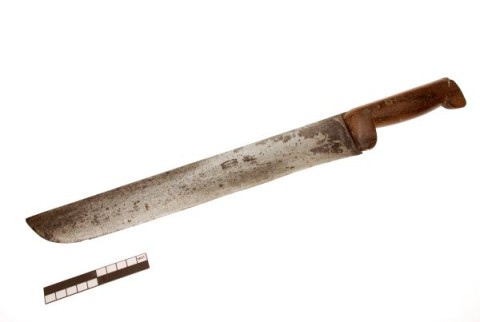
Butcher knife
Larger pieces of meat are cut and shaped with a butcher knife. A butcher
knife has a long (approx. 25-35 cm) and sturdy blade with a cut that is
bent towards the end, ending in a sharp point. The wooden or plastic handle
is shaped in such a way that the hand cannot slip when cutting. [MOT]
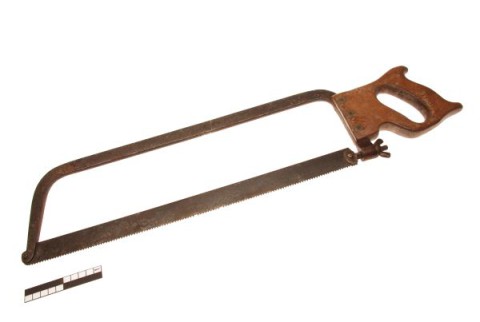
Butcher's bone saw
Bones of slaughtered animals are cut into pieces with a butcher's saw. It
has an elongated - often replaceable - saw blade (approx. 25-35 cm long)
that is stretched in an arc-shaped frame with a straight handle or a pistol
butt. See also the two-handed meat cleaver. [MOT]
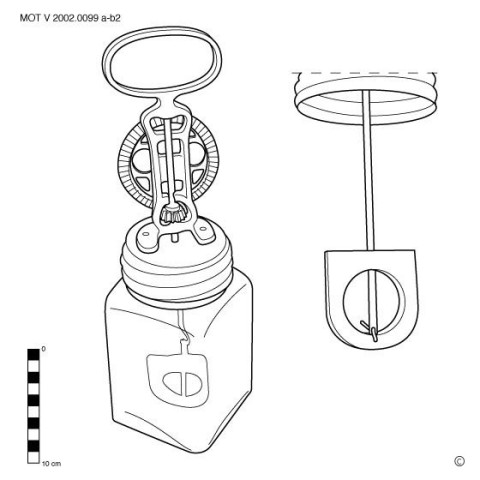
Butter churn (pot)
This text can only be consulted in Dutch
<https://www.mot.be/resource/Tool/652?lang=nl>
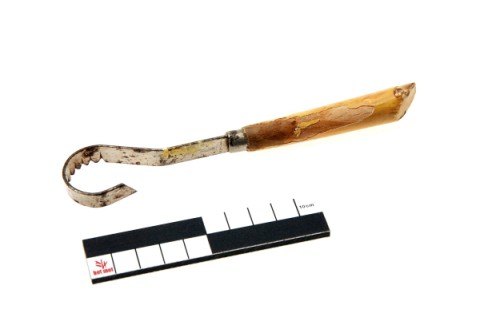
Butter cutter
This text can only be consulted in Dutch
<https://www.mot.be/resource/Tool/butter-cutter?lang=nl>
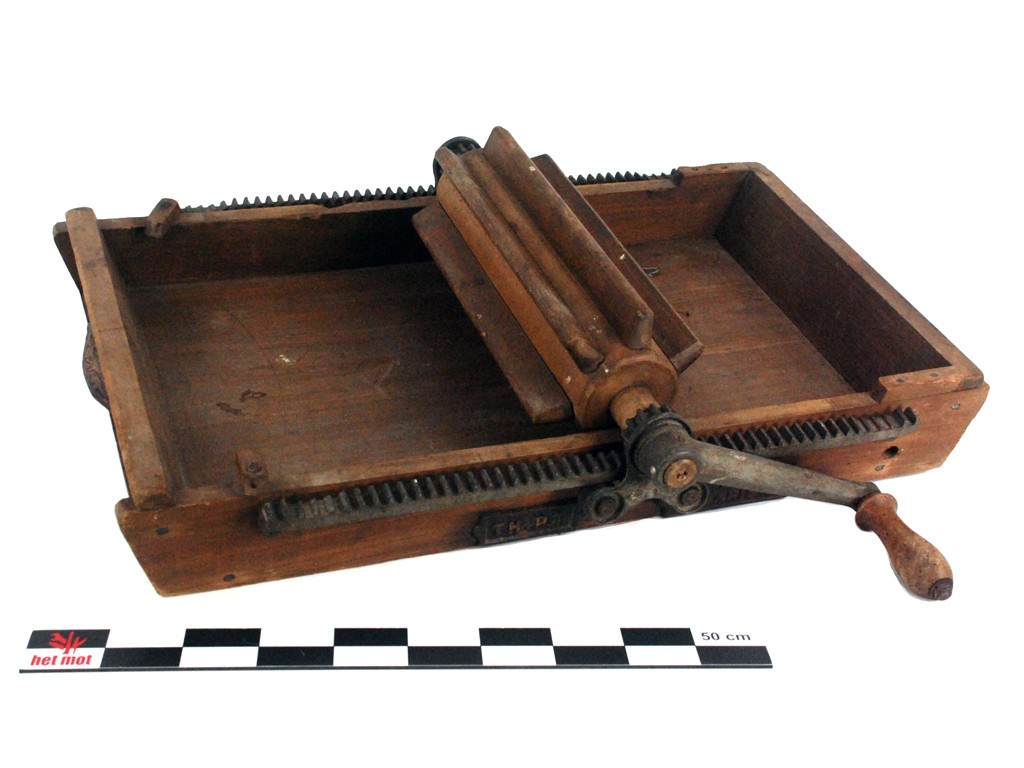
Butter kneader (hand)
This text can only be consulted in Dutch
<https://www.mot.be/resource/Tool/butter-kneader-hand?lang=nl>
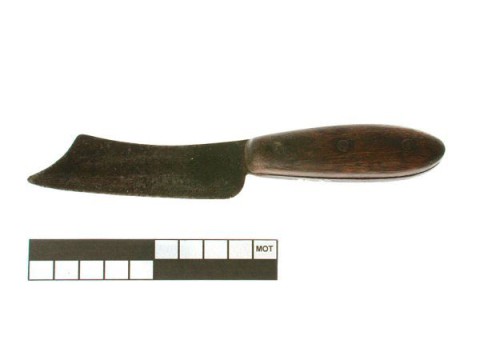
Butter knife
Knife (approx. 15-18 cm) with a spatula-shaped, non-cutting blade, which is
pointed or rounded at the end. With the butter knife you take a lump of
butter from the butter dish and put it on the bread. See also butter spoon.
[MOT]
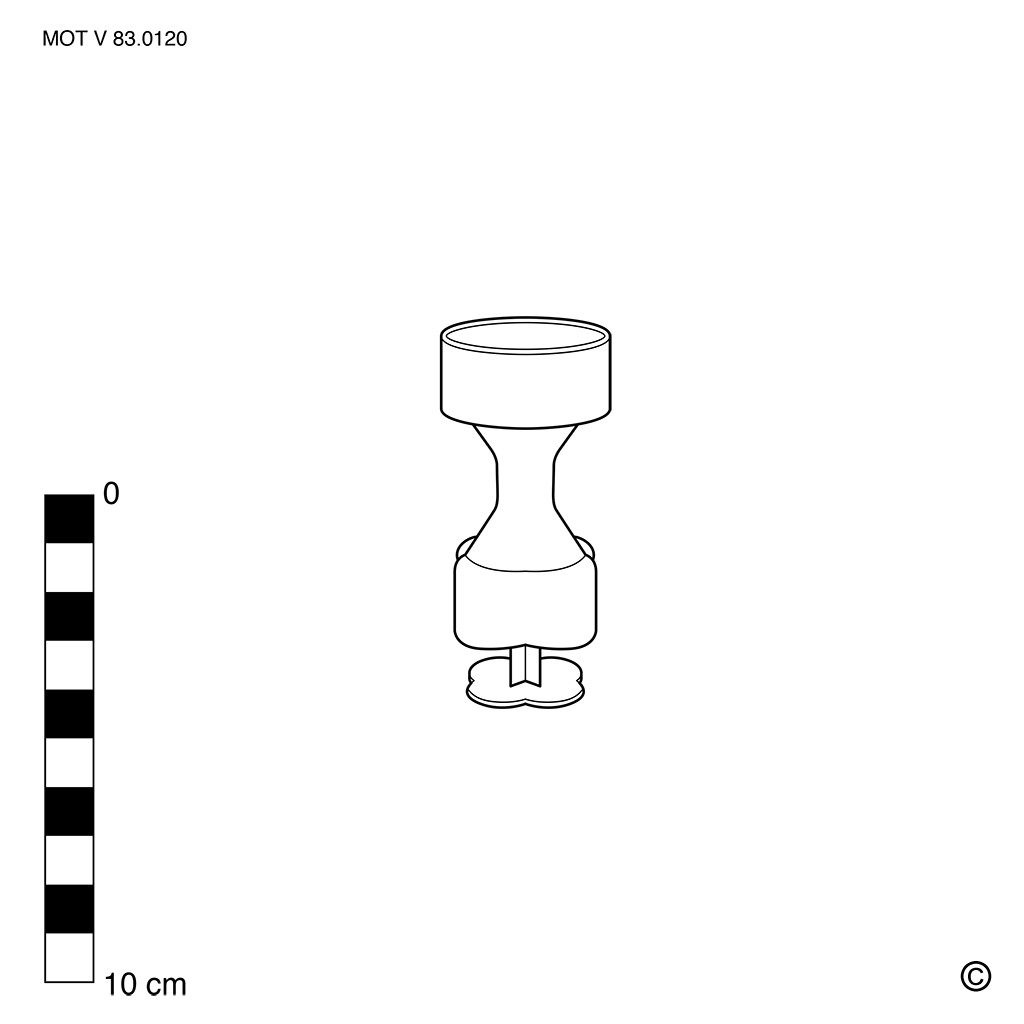
Butter mold
This text can only be consulted in Dutch
<https://www.mot.be/resource/Tool/butter-mold?lang=nl>
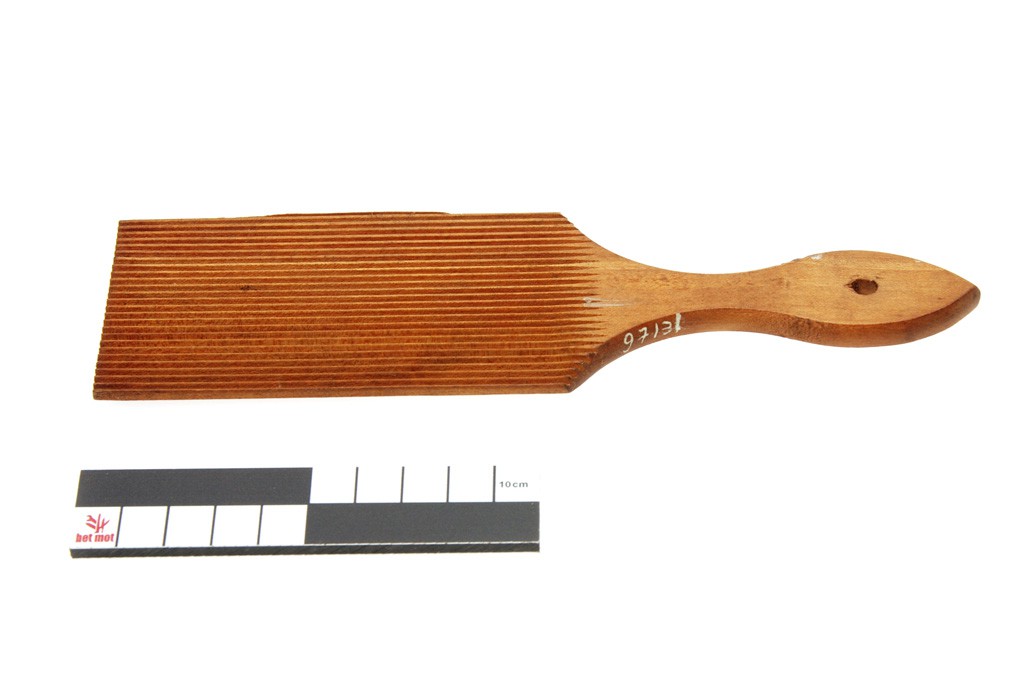
Butter paddle
Picked from the churn, the extracted butter must be kneaded to work out the
buttermilk. This kneading can be done by hand or with a butter paddle. This
is a wooden hand tool with a flat, ribbed blade and a straight or T-shaped
handle. [MOT]
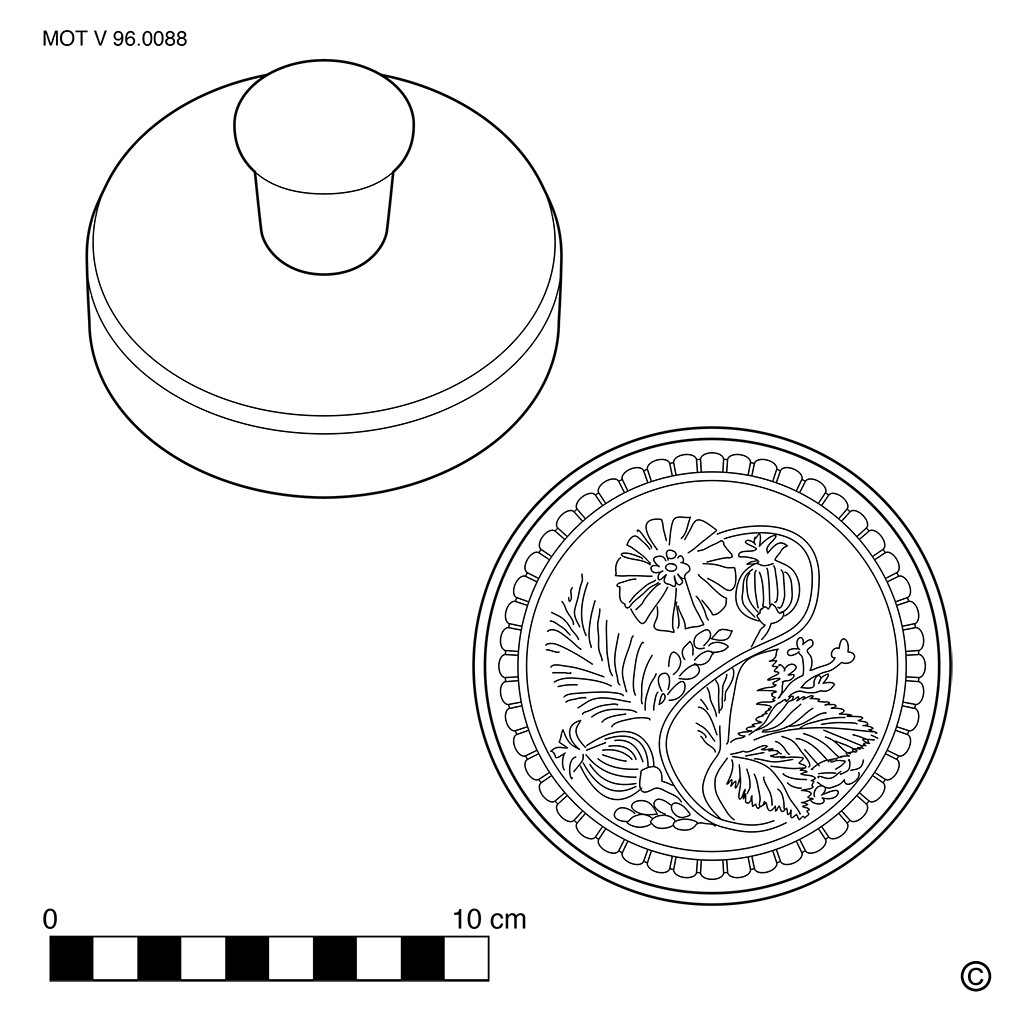
Butter prints
This text can only be consulted in Dutch
<https://www.mot.be/resource/Tool/butter-prints?lang=nl>
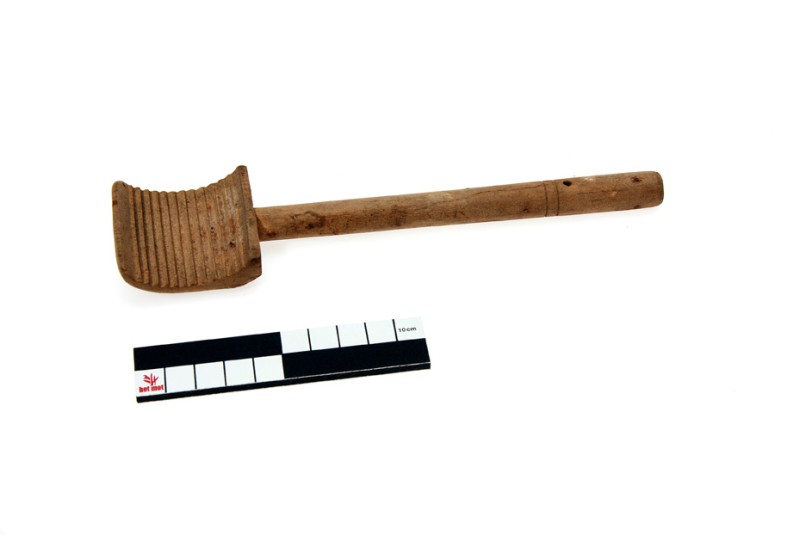
Butter spoon
Wooden spoon (approx. 20 cm) with a ribbed, concave blade. It is used to
take butter from a larger butter block. Sometimes it is also used for
kneading and working up the butter, but usually this is done with a butter
paddle. See also butter knife. [MOT]
